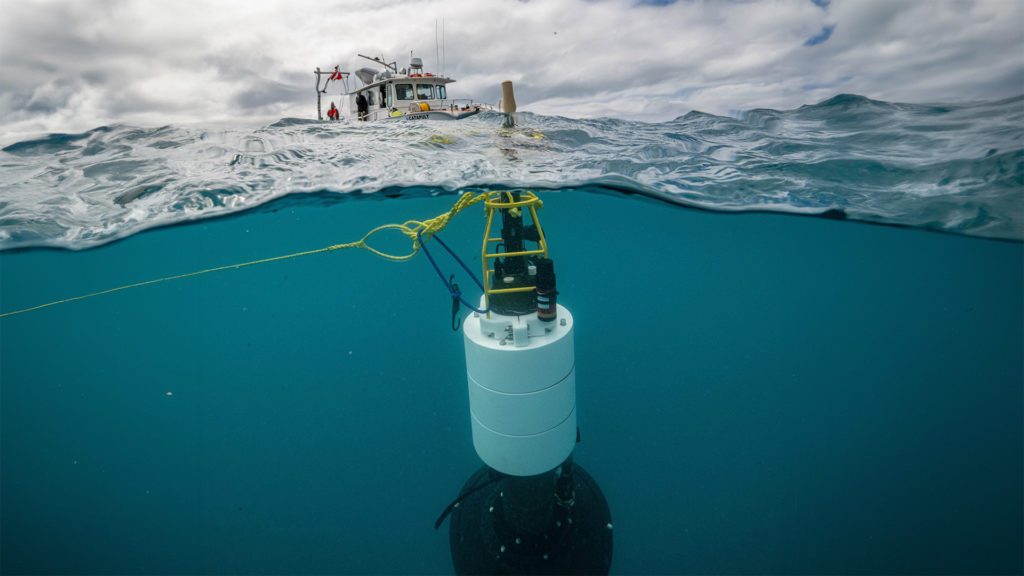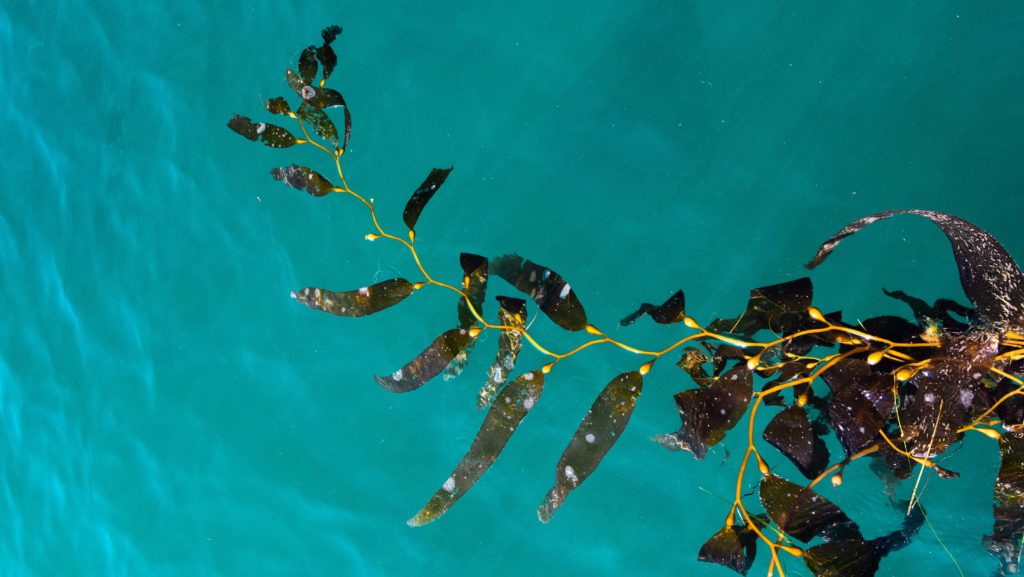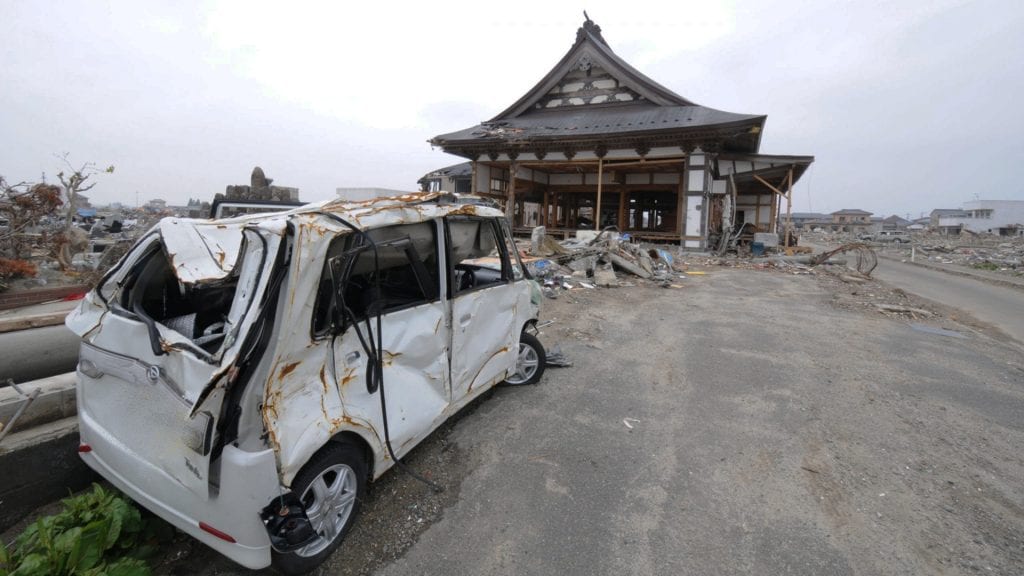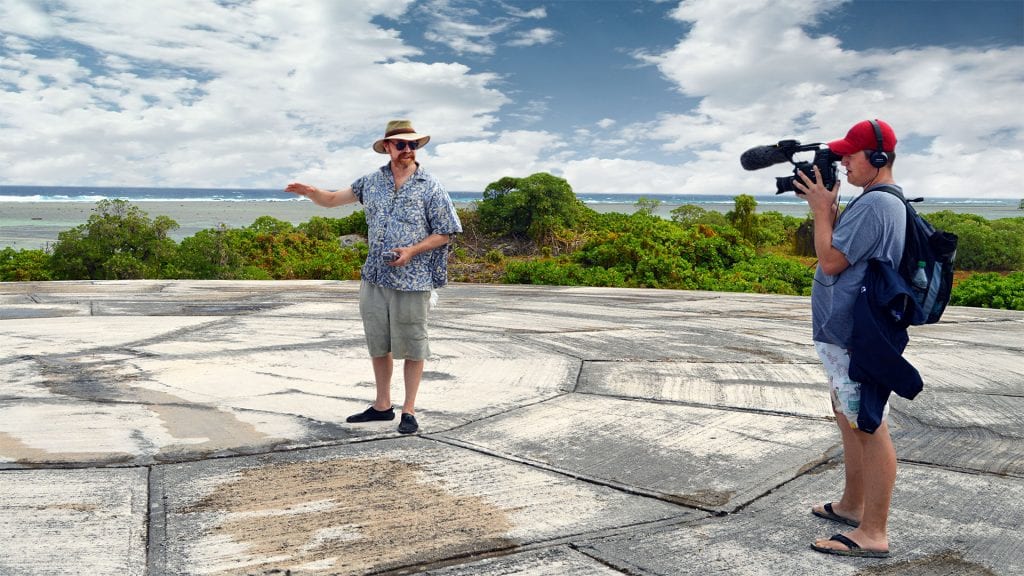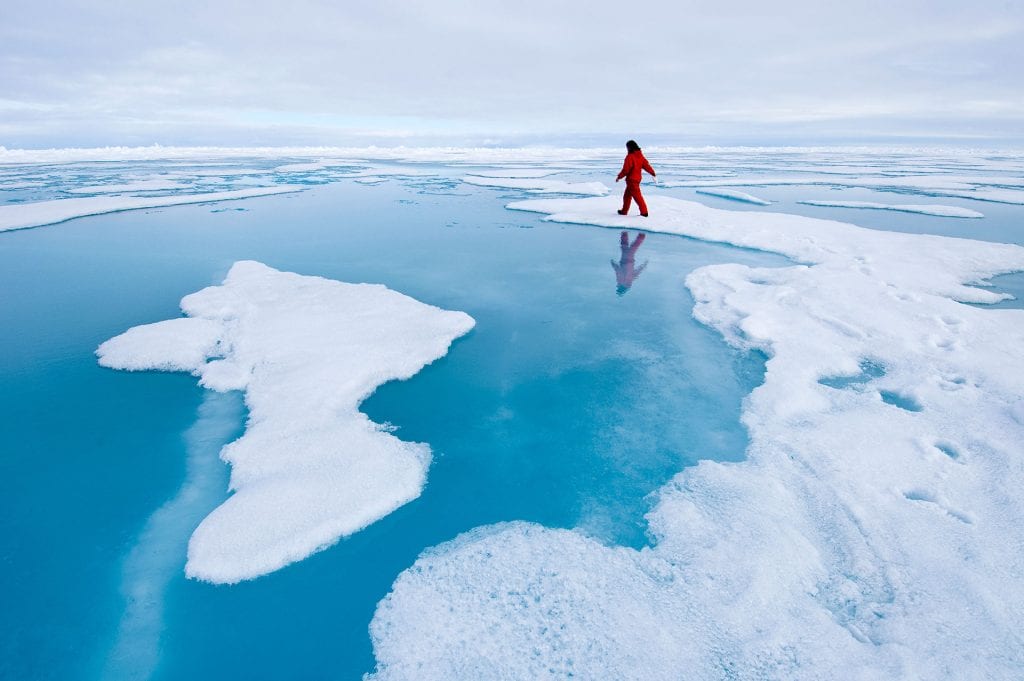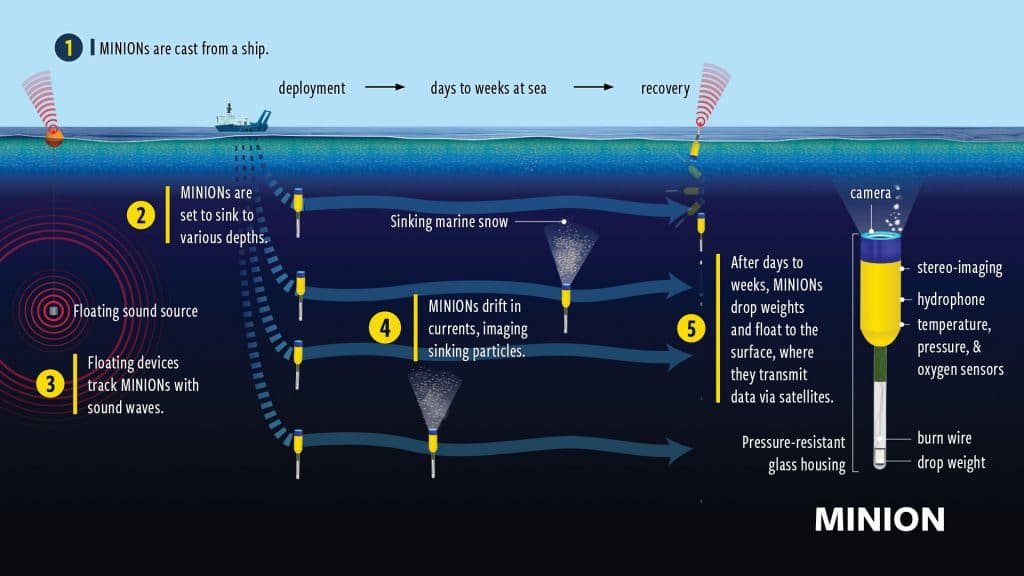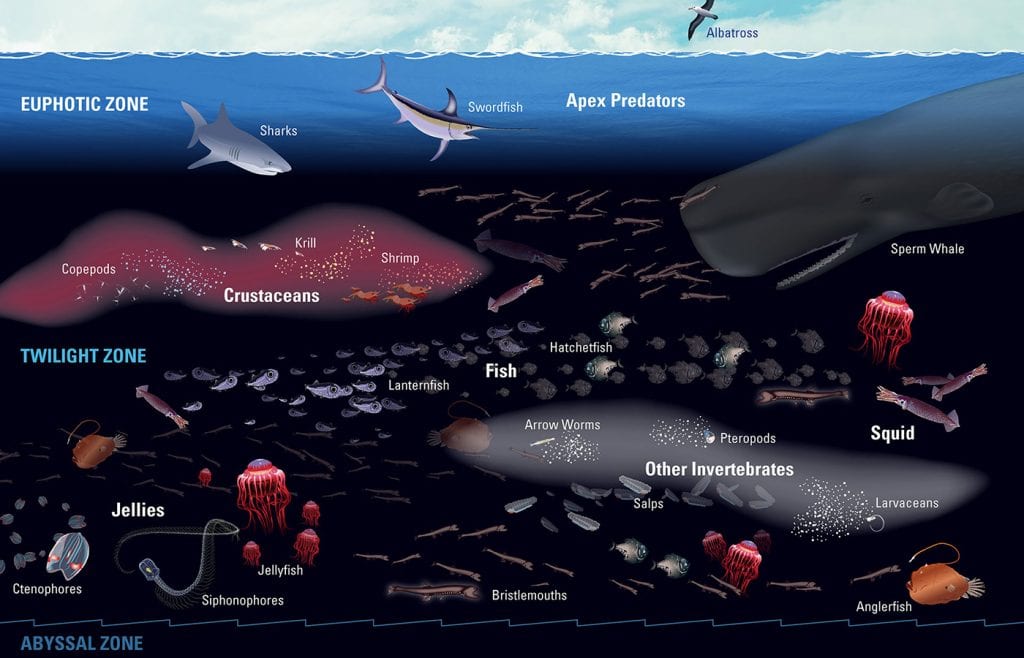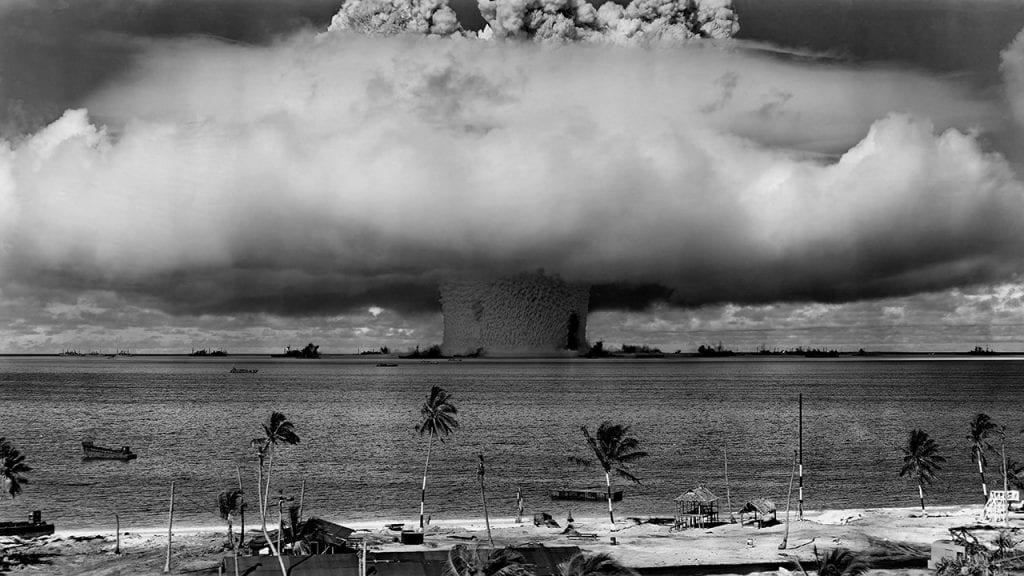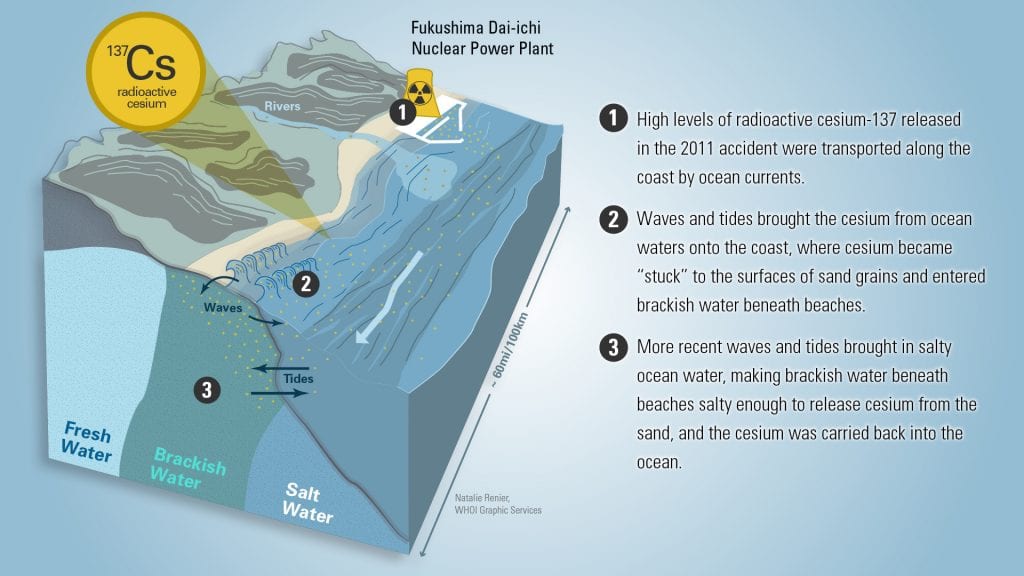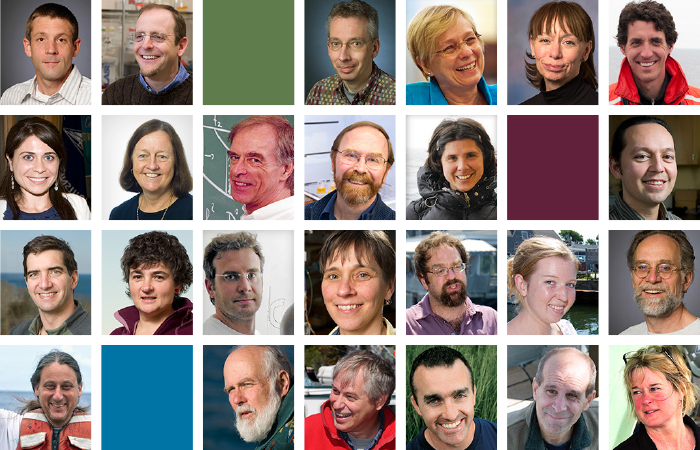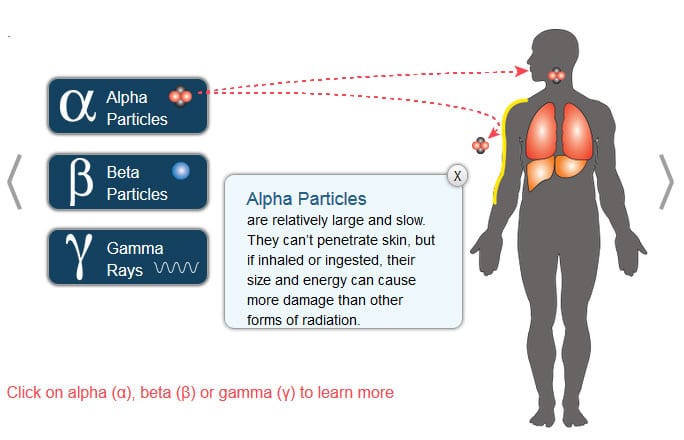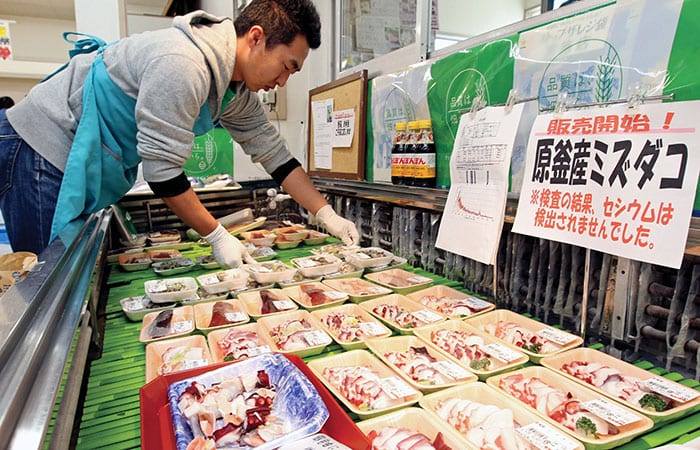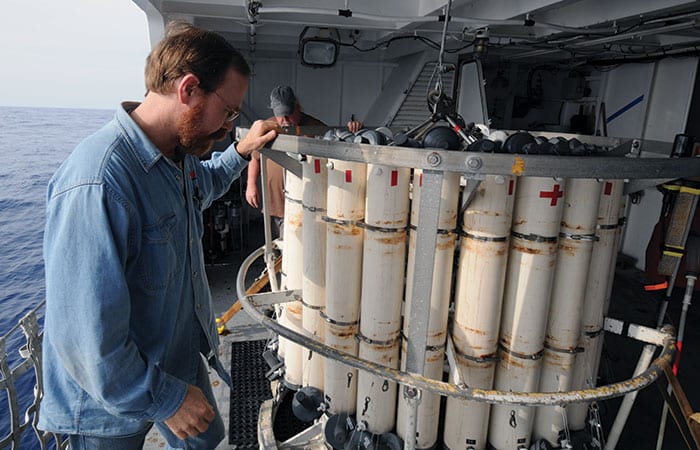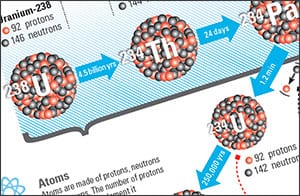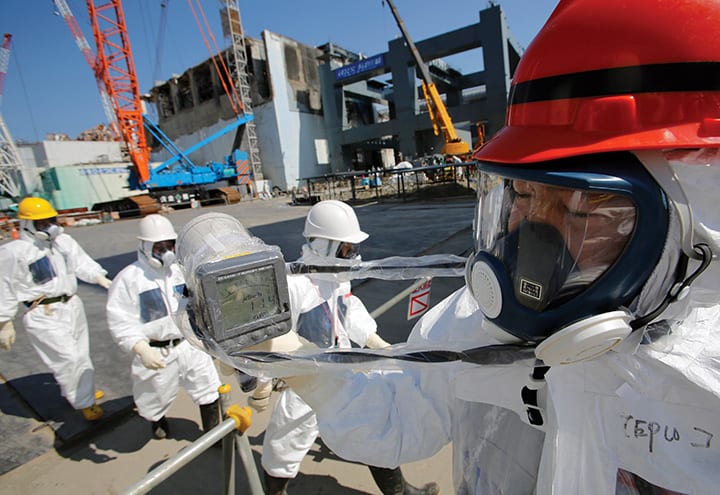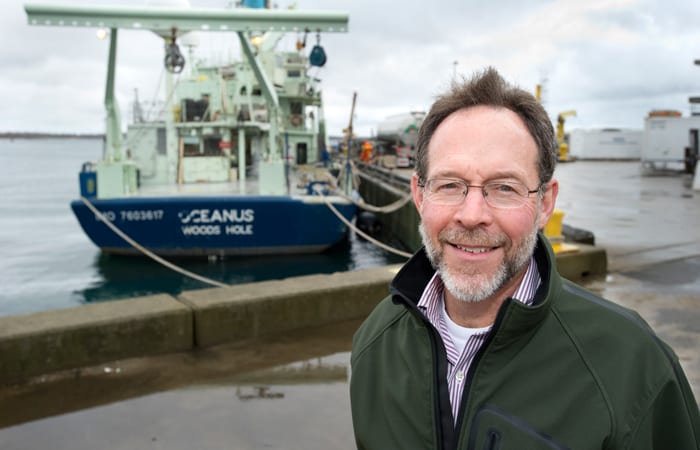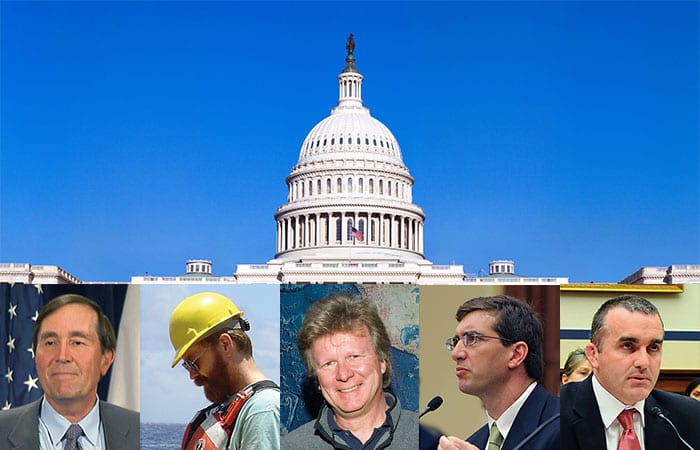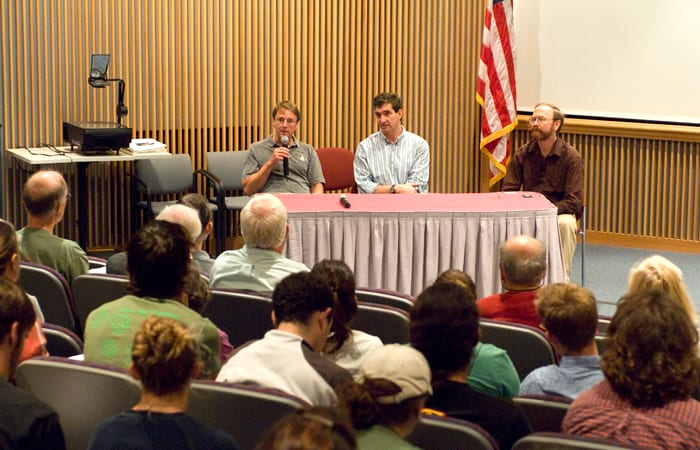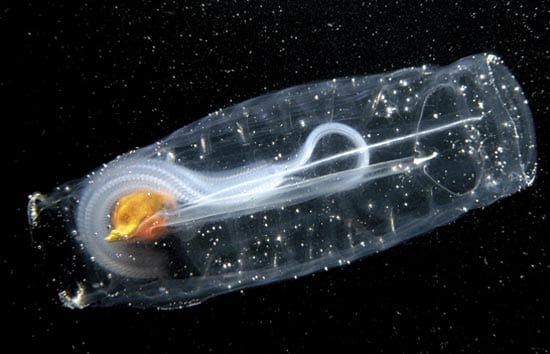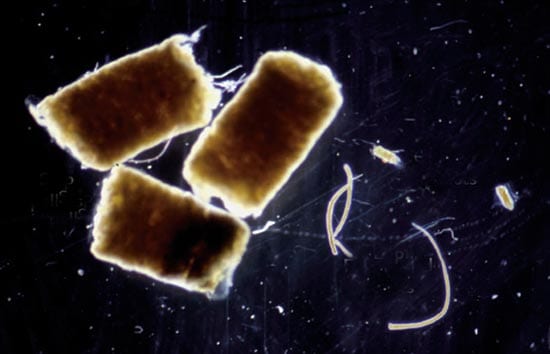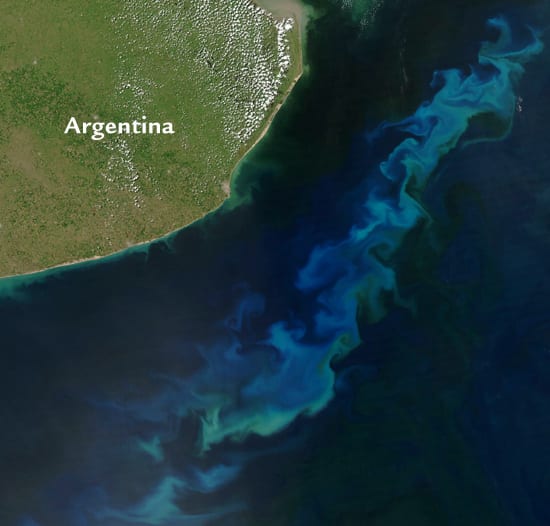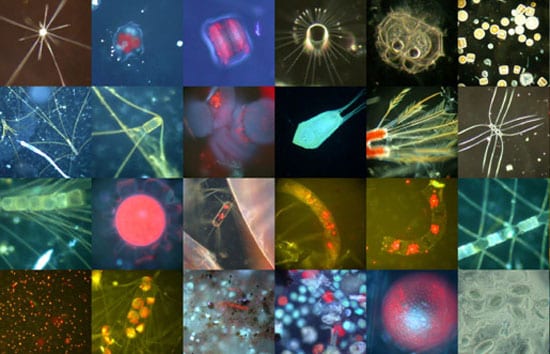Ken Buesseler
Refine by
Date
Topic:
Article Type
Special Series
Author
A new way to track marine snow ‘blizzards’
New submersible provides insights into how organic carbon moves through the ocean twilight zone
National Academy scientists say the ocean must play a role in CO2 removal to stave off climate change
A committee from the National Academy of Science reviews ocean-based methods to remove carbon dioxide in order to meet the Paris Climate Agreement goals
Fukushima and the Ocean: A decade of disaster response
One decade since explosions rocked Japan’s Fukushima Dai-ichi nuclear power plant, researchers look back at how the ocean was impacted by the radioactivity fallout from the event, and discuss how the situation continues to evolve.
Putting the ‘nuclear coffin’ in perspective
WHOI chemist and marine radioactivity expert shares his thoughts about radioactivity waste leaking from Runit Dome—a bomb crater filled with radioactive soil in the Marshall Islands that is now being penetrated by rising sea levels
Oceans of Change
“THE SEA NEVER CHANGES, AND ITS WORKS, FOR ALL THE TALK OF MEN, ARE WRAPPED IN MYSTERY.” So observed the narrator of “Typhoon,” Joseph Conrad’s 1902 novella. But today, we know that his mariner protagonist…
Chasing Ocean ‘Snowflakes’
Scientists envision putting a flotilla of devices in the ocean to act as “eyes” that can track the “marine snow” that drifts down into the ocean.
Mission to the Ocean Twilight Zone
The twilight zone is a part of the ocean 660 to 3,300 feet below the surface, where little sunlight can reach. It is deep and dark and cold, and the pressures there are enormous. Despite these challenging conditions, the twilight zone teems with life that helps support the ocean’s food web and is intertwined with Earth’s climate. Some countries are gearing up to exploit twilight zone fisheries, with unknown impacts for marine ecosystems and global climate. Scientists and engineers at Woods Hole Oceanographic Institution are poised to explore and investigate this hidden frontier.
Back to Bikini
WHOI scientists returned to the Pacific islands of Bikini and Enewetak in 2015 to study radioactive contamination nearly 70 years after the U.S. used the islands for nuclear weapons testing. What they learned could also be applied to a more recent nuclear disaster: the 2011 Fukushima Daiichi reactor meltdown in Japan.
Radioactivity Under the Beach?
Scientists have found a previously unsuspected place where radioactive material from the Fukushima Dai-ichi nuclear power plant disaster has accumulated—in sands and brackish groundwater beneath beaches up to 60 miles away.
WHOI Scientists Garner Awards in 2013
As the year 2013 ends, we profile scientists who recently received awards and recognition for their work.
Radiation Health Risks
The ability to gauge radiation at vanishingly low concentrations gives scientists a powerful tool for understanding ocean processes. “We can measure down to less than 1 becquerel”—one radioactive decay event per second, said Ken Buesseler,…
Seafood Safety and Policy
In Japan, a nation that eats prodigious amounts of seafood, one question sits high on the list of public concerns: Is seafood caught after the Fukushima nuclear catastrophe safe for human consumption? In the wake of…
How Is Fukushima’s Fallout Affecting Marine Life?
» 日本語版 The Fukushima nuclear disaster delivered an unprecedented amount of radioactivity into the sea over a relatively brief time. How did that pulse of cesium and other radioisotopes make its way through the marine…
Radioisotopes in the Ocean
» 日本語版 The release of radioisotopes from the Fukushima Dai-ichi nuclear power plant in March 2011 amounts to the largest-ever accidental release of radiation to the ocean. It came mostly in the form of iodine-131,…
ABCs of Radioactivity
<!– // –> » 日本語版 To the average layperson, “radioactivity” is a harsh and scary word. But the fact is that radioisotopes, both natural and artificial, are all around us. And for marine scientists in…
Japan’s Triple Disaster
» 日本語版 The chain of calamity now known as Japan’s Triple Disaster began with a massive rupture in the ocean floor. At 2:46 p.m. on March 11, 2011, below the seafloor off the country’s northeast…
Lessons from the 2011 Japan Quake
When the ground in Japan started shaking on March 11, 2011, the Japanese, who are well accustomed to earthquakes, knew this time was different. They weren’t surprised—the fault that ruptured has a long record of…
New Head of WHOI Fleet Comes Aboard
<!– –> Sometimes, a career change has the feel of deferred destiny. “I was in the Caribbean,” said Rob Munier, “at Grand Cayman Island, doing graduate work in the mid-1970s, and one day there was…
WHOI Scientists Bring Expertise to Capitol Hill
Several WHOI scientists have traveled to the nation’s capital, supplying Congress with scientific information and advice on problems ranging from toxic algae and oil pollution in the oceans to climate change and a controversial proposal…
To Fertilize, or Not to Fertilize
Global warming is “unequivocal,” the Intergovernmental Panel on Climate Change (IPCC) reported in November 2007. Human actions—particularly the burning of fossil fuels—have dramatically raised carbon dioxide and other greenhouse gases in the atmosphere, leading our…
Proposals Emerge to Transfer Excess Carbon into the Ocean
It’s sort of the planetary equivalent of moving clutter accumulating in the attic to other storage space in the basement: transferring excess heat-trapping carbon dioxide from Earth’s atmosphere into the deep ocean. A combination of…
Will Ocean Iron Fertilization Work?
In this age of satellites, it’s fairly easy to answer the basic question of whether adding iron to the ocean can stimulate a plankton bloom. When storms over land blow iron-rich dust into the sea,…
Fertilizing the Ocean with Iron
“Give me half a tanker of iron, and I’ll give you an ice age” may rank as the catchiest line ever uttered by a biogeochemist. The man responsible was the late John Martin, former…
A Journey to the Ocean’s Twilight Zone
You are about to enter another dimension. You’re moving into a place of both shadow and substance, of things and ideas; a journey into a wondrous part of the ocean, whose boundaries are 300 to…

